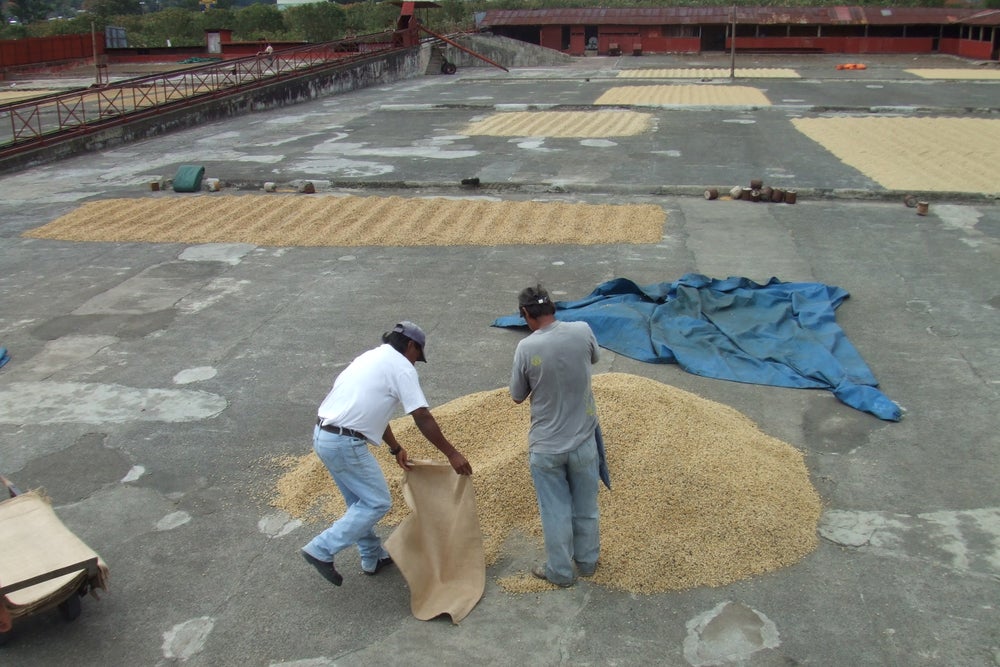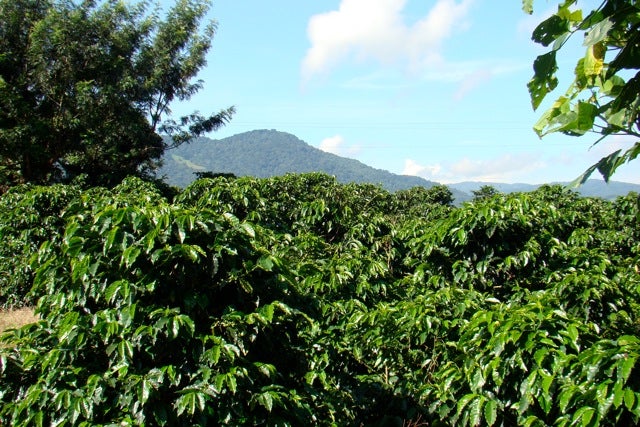About This Coffee
La Isabella Estate is owned by the Castro family and run by Claudio Castro, the third generation of Castros to operate La Isabella Estate.
The Castros have been growing coffee in Tres Rios since 1888 when Teodosio Castro Angarita, an enterprising young Colombian living in Costa Rica, purchased his first estate. La Isabella is named after its previous owner, Isabella Malavassi, who sold the estate to the Castro family in the 1980s.
Harvest & Post-Harvest
Ripe, red cherry is harvested and pulped on the farm. Following fermentation, coffee is washed in clean water and laid on patios to dry. When the weather is poor, parchment may be finished in mechanical dryers. Parchment is raked frequently to ensure even drying.
Coffee in Costa Rica
Thanks to tireless innovations, the sheer number of coffee varieties, extensive technical knowledge and attention to coffee production, Costa Rica is one of the most advanced coffee producing countries in Central America.
The climatic conditions in the country also play a role in the high quality of coffee produced. There are eight coffee regions: Guanacaste, West Valley, Turrialba, Valle Central (Central Valley), Tres Rios, Brunca, Orosi, and Tarrazú, a specific part of Valle Central.
Costa Rica has also become a world leader in traceability and sustainability in coffee production. Ninety percent of the country’s 50,000 coffee farmers are smallholders, and today, many deliver their cherry to boutique micro-mills that often process cherries according to producer specs to retain single-lot or single-farm qualities.
The rise of micro-mill processing, in itself, is a relatively recent development. Prior to the early 2000s it was common for smaller producers to deliver their cherry to cooperative-owned mills. As lucrative specialty markets developed, more and more farmers began establishing mills on their own farms, giving them increased control over processing and more assurance of the ‘traceability story’ so important to the growing market segment. Mills with excess capacity would then offer their services to neighboring farmers, offering a range of processing methods for small lots along with full traceability for roasters and importers. The system has enabled Costa Rica’s small to mid-sized coffee farmers to offer a wide range of differentiated products. Today, specialty lots from Costa Rica are almost as likely to bear the name of the micro-mill where they were processed as that of the producing farm.
The typically uncertain and dry weather patterns in Costa Rica make coffee farming more difficult. Long dry seasons and unpredictable weather patterns have virtually eliminated the possibility of organic farming. Nonetheless, both the government and farmers have taken active steps to protect the environment. Some of these restrictions also inform the processing methods for which Costa Rican coffee has become known.

